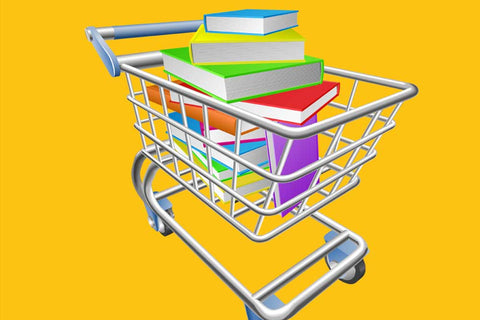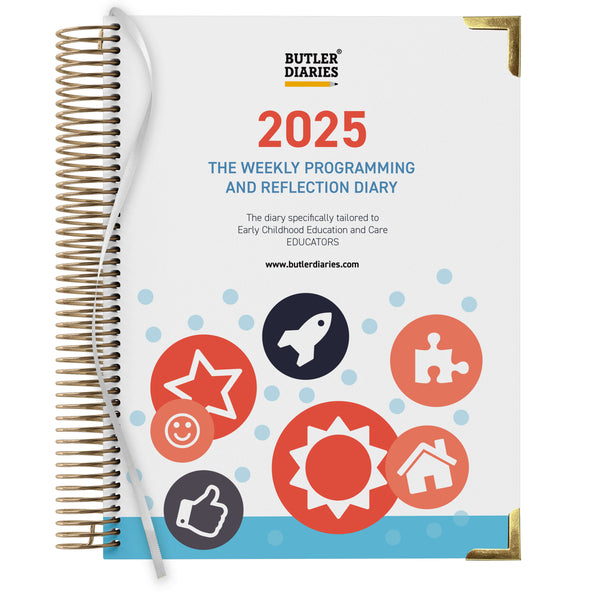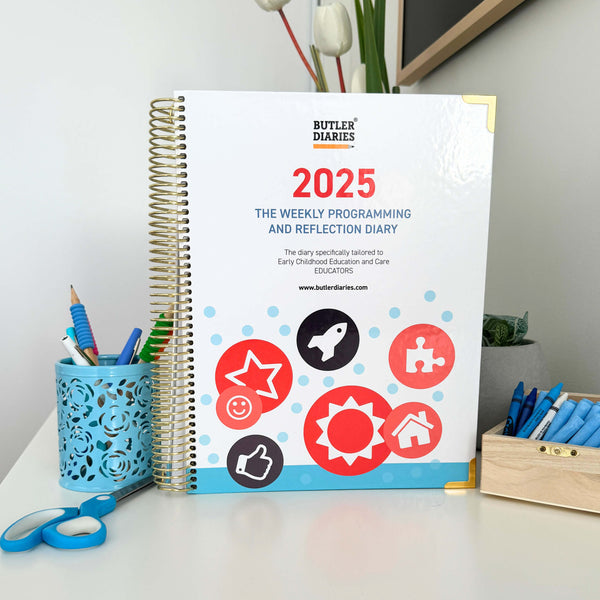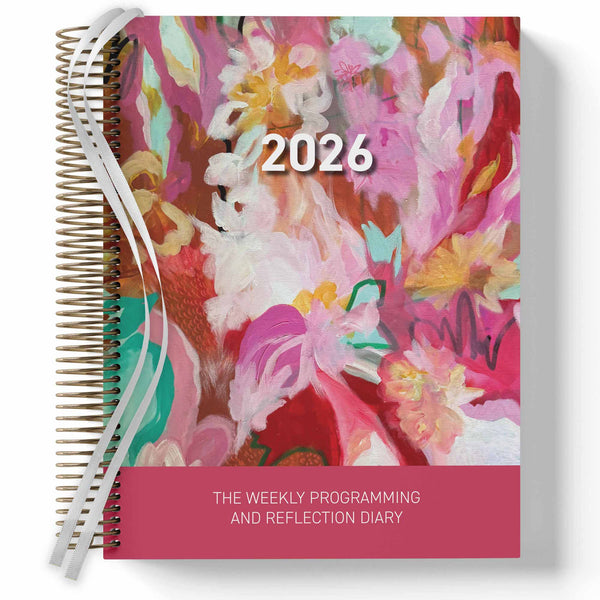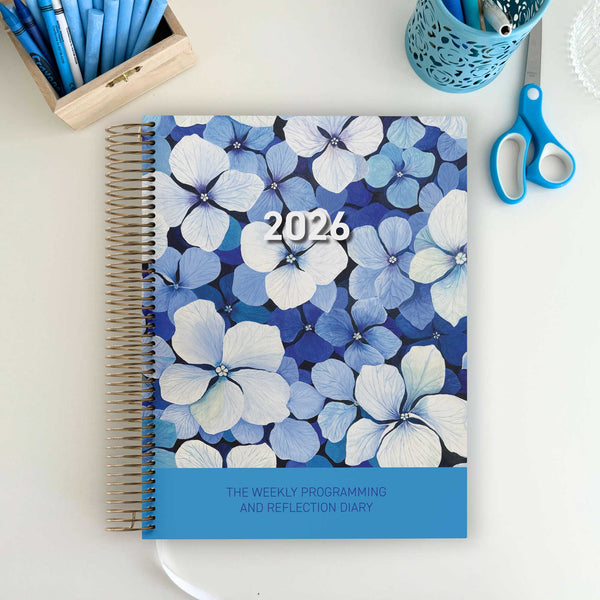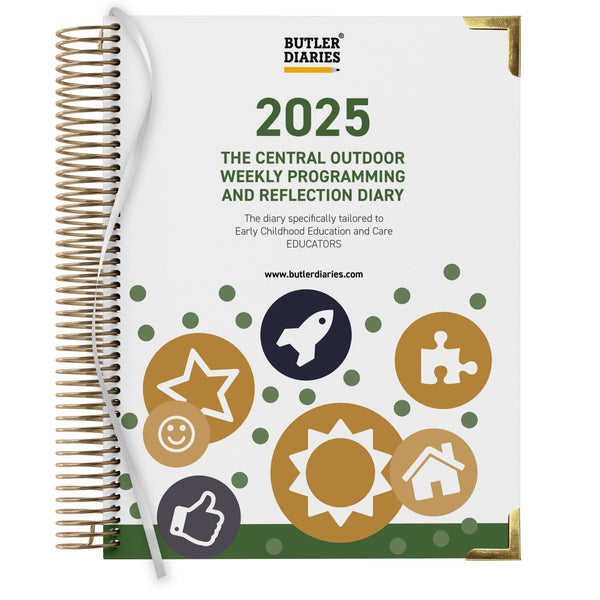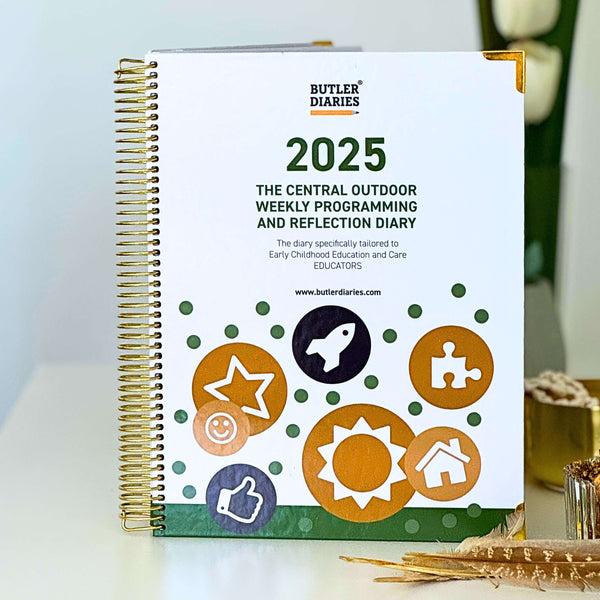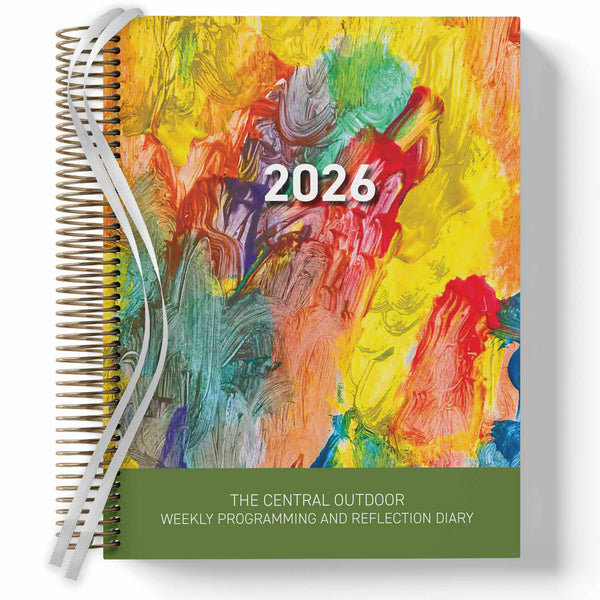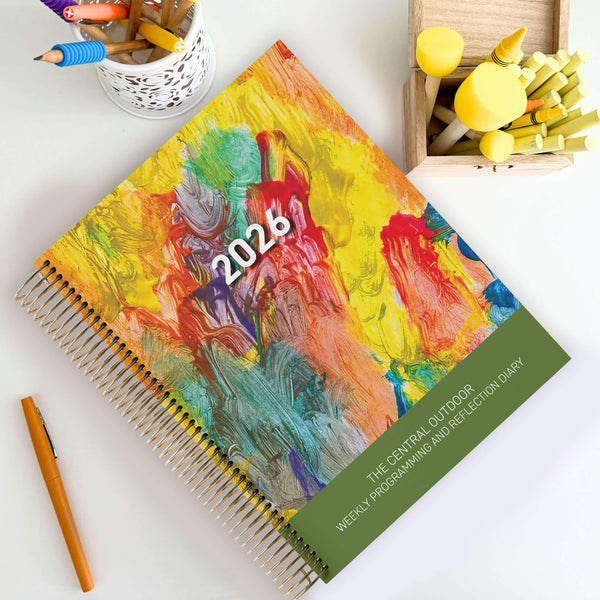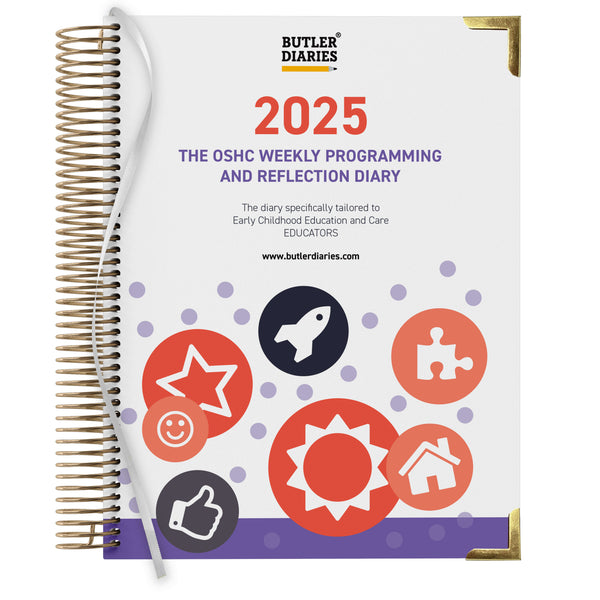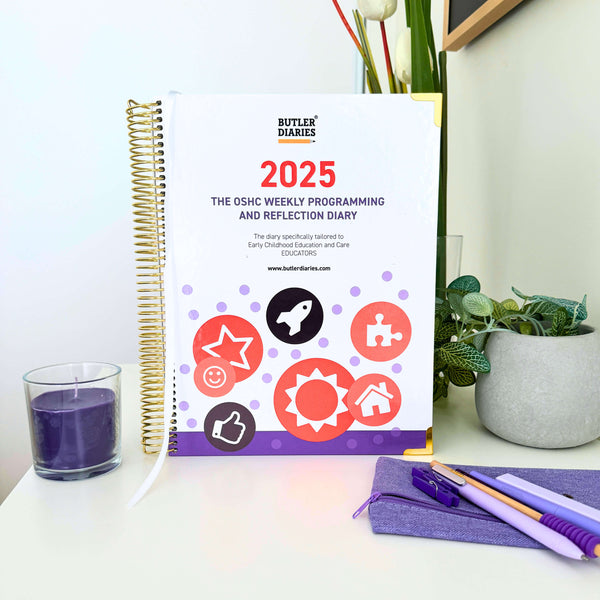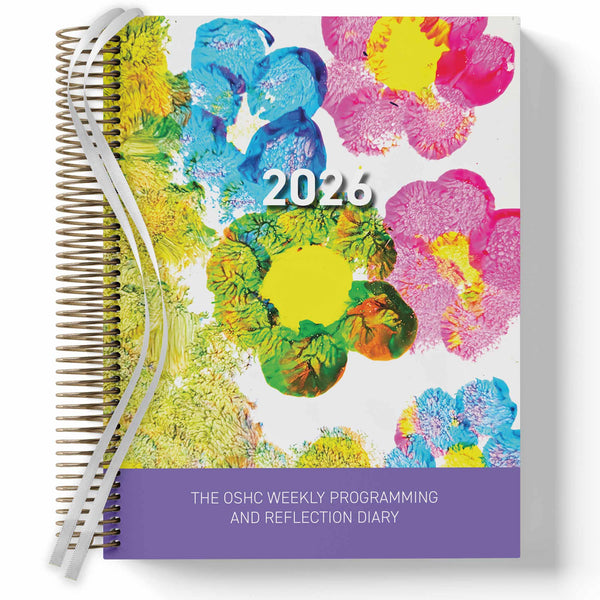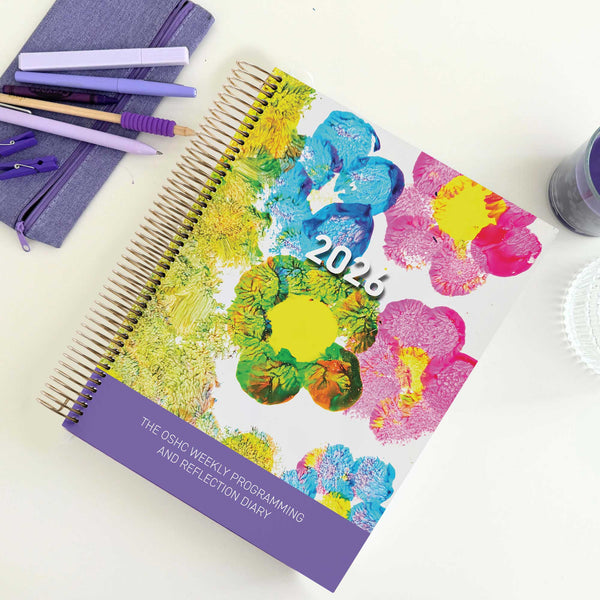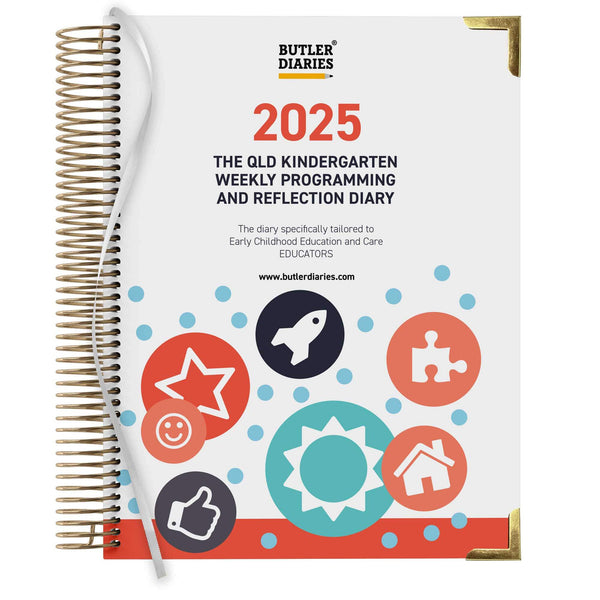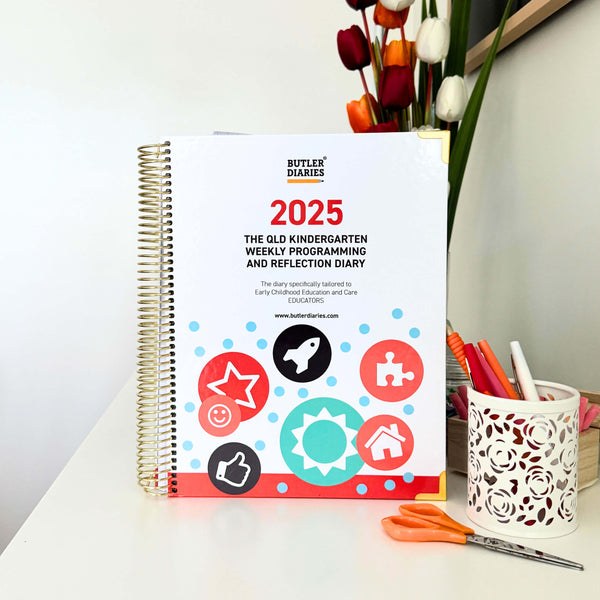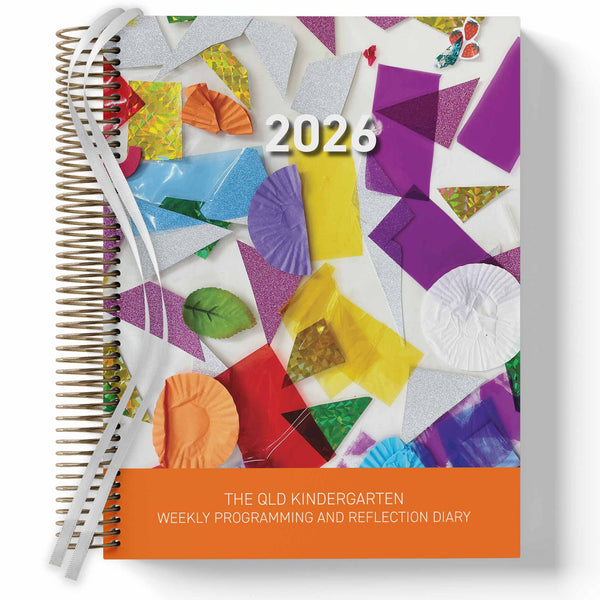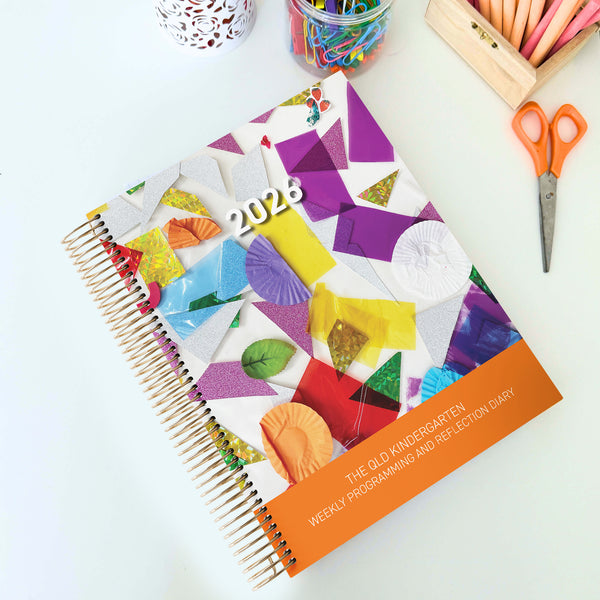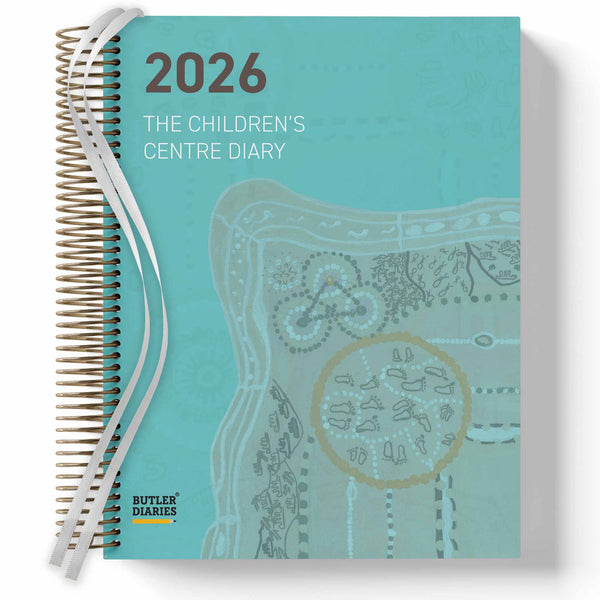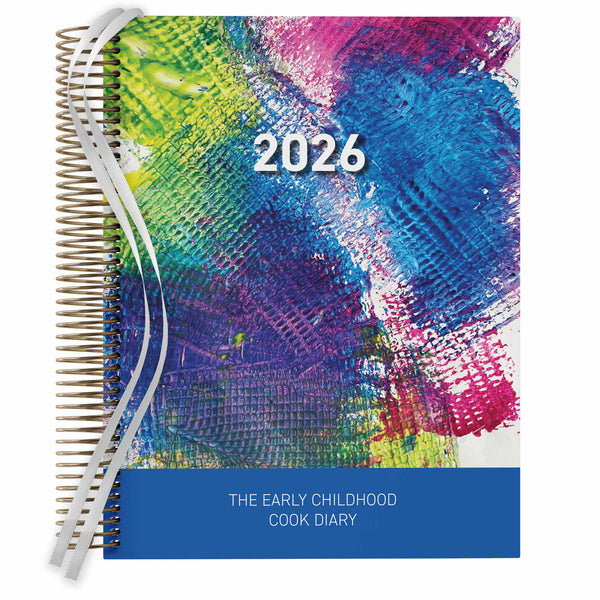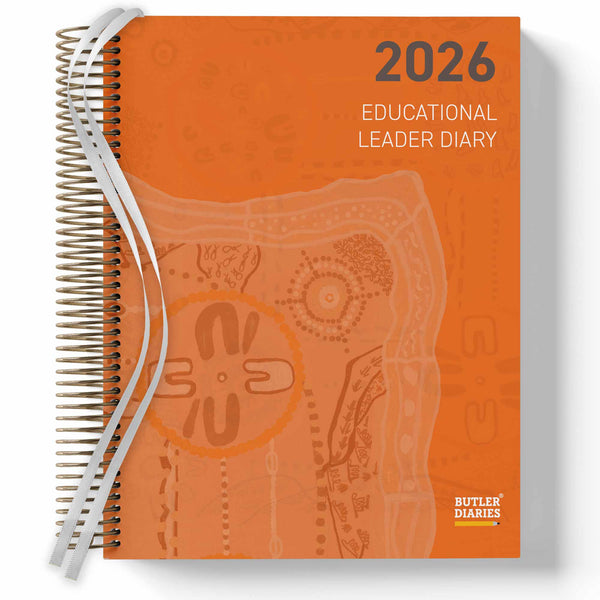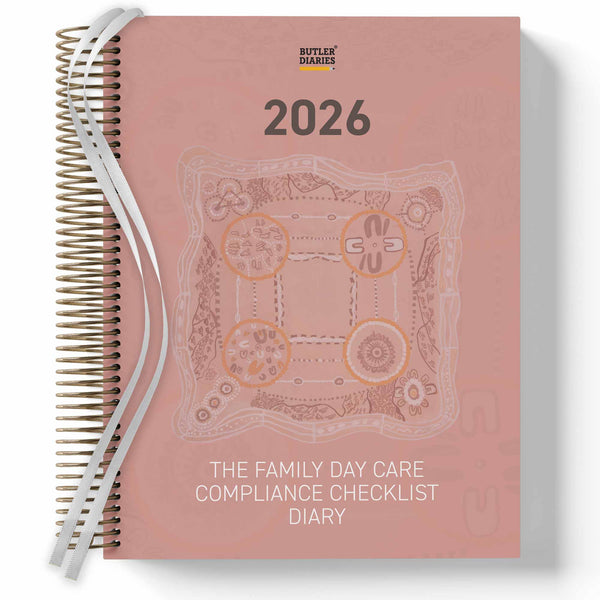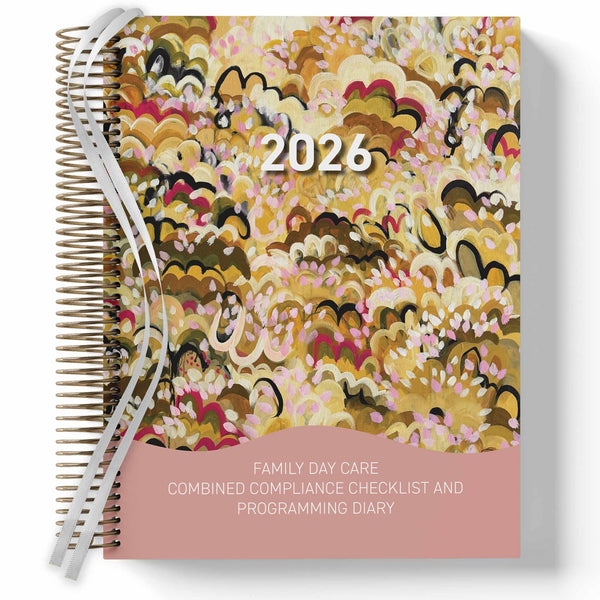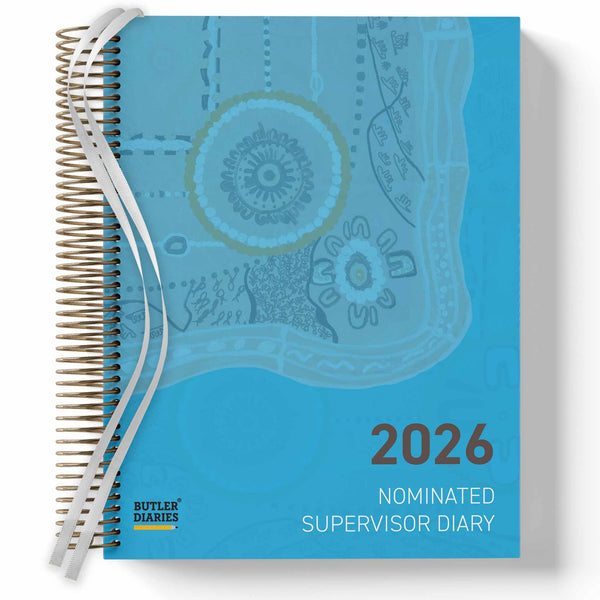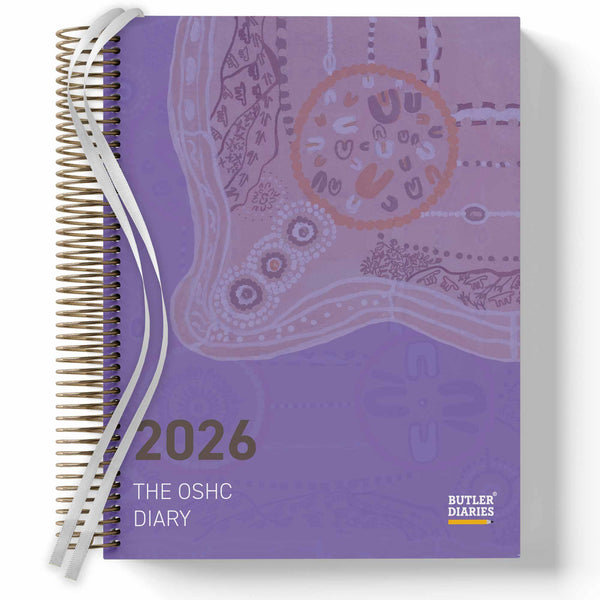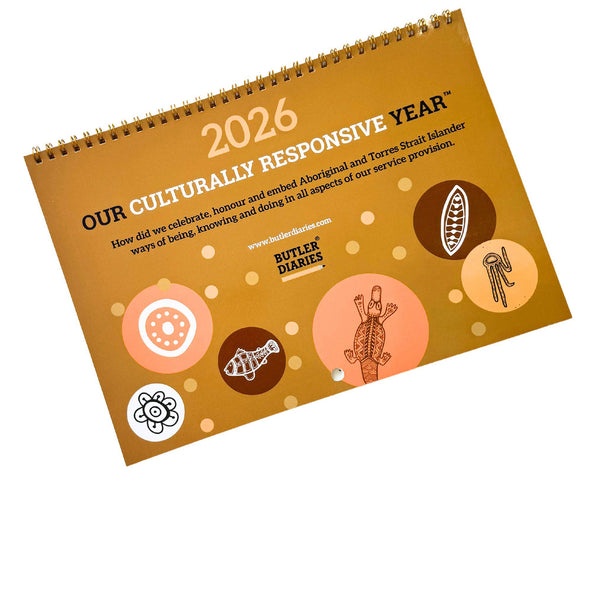Diversity planning is crucial for Australian educators, given the nation's rich multicultural makeup - with 29.5% of Australians born overseas and 22.8% speaking a language other than English at home. A well-structured diversity calendar helps educators plan meaningful activities that reflect this mix, aligning with frameworks like the EYLF and MTOP to build empathy, respect, and a sense of belonging in children.
Practical tips for educators:
- Plan ahead and integrate key dates into daily routines.
- Only include dates relevant to your context (families, service, community, etc).
- Use age-appropriate activities, from sensory play for toddlers to interactive discussions for older kids.
- Involve families by inviting them to share traditions or contribute to classroom displays.
- Use the Calendar with your Programming and Reflection Diary.
- Leverage resources like Butler Diaries' digital guides to get the most out of your Calendar.
Key Diversity Dates in 2025
Planning your year around key diversity dates can help create meaningful and inclusive learning experiences. Below is a breakdown of important dates that Australian early childhood educators can incorporate into their 2025 programming to celebrate diversity and community connections.
Major Australian Public Holidays
Australia’s public holidays provide opportunities to explore shared traditions and community values.
- Australia Day (26 January): This day can spark discussions about belonging and community. It’s also an opportunity to acknowledge that families may have different perspectives on the day, encouraging a focus on Australia’s diverse heritage.
- ANZAC Day (25 April): Introduce themes of remembrance and respect with age-appropriate activities, such as creating poppies or discussing community values.
- Easter (18–21 April): The Easter period offers a chance to explore themes of renewal and growth, tied to seasonal changes.
- Christmas Day (25 December) and Boxing Day (26 December): Use these holidays to discuss how families celebrate in different ways, fostering conversations about diversity and respect for various traditions.
Religious and Community Observances
Religious and community celebrations throughout the year provide opportunities to learn about the rich diversity within Australian communities.
- Lunar New Year (29 January): Celebrate with activities that focus on family, tradition, and new beginnings.
- Ramadan (28 February–30 March) and Eid al-Fitr: Highlight themes of patience, kindness, and community sharing through storytelling and group activities.
- Diwali (20 October): Explore light, colour, and storytelling to engage children in this vibrant celebration.
- Hanukkah (starting 14 December): Discuss family traditions during the summer holiday period, offering another perspective on celebrations.
- Other observances include Passover (13–21 April) and Vaisakhi (13 April), along with various cultural new year celebrations across the year.
Awareness Days and Weeks
Awareness events provide structured opportunities to build understanding and respect for diversity in age-appropriate ways.
- Harmony Week (17–23 March): Celebrate inclusiveness and belonging by exploring different cultures through food, music, art, and stories.
- International Day for the Elimination of Racial Discrimination (21 March): Discuss fairness and equality with activities that promote kindness and challenge stereotypes.
- World Autism Awareness Day (2 April): Focus on understanding different ways people communicate and interact, reinforcing inclusivity.
- NAIDOC Week (6–13 July): Celebrate the history, culture, and achievements of Aboriginal and Torres Strait Islander peoples. Invite local Indigenous community members to share their stories and traditions.
- Wear it Purple Day (29 August): Promote acceptance and inclusion of LGBTQIA+ individuals and families, supporting discussions about diverse family structures.
- International Day of Persons with Disabilities (3 December): Encourage inclusive play and learning experiences that promote understanding and acceptance of people with disabilities.
Your Programming and Reflection Diary includes a page of public holidays and diversity dates for you to review and plan for relevant dates. Incorporating these into your programming can help create a learning environment that values respect, diversity, and cultural richness throughout the year.
Practical Strategies for Planning Around Diversity Days
Using the diversity dates mentioned earlier, you can thoughtfully integrate these celebrations into your curriculum. The key is to plan ahead and make these events a natural part of your daily programming, rather than standalone activities.
Adding Key Dates to Programs
Incorporate diversity events into your plans in ways that connect with the children’s cultures and lives. Instead of treating these celebrations as one-off activities, spread them across different learning areas in the weeks leading up to the event.
For example, when preparing for Lunar New Year, you could include counting activities using red envelopes, discuss family traditions during circle time, and teach simple Mandarin greetings during morning routines. This ensures that cultural diversity becomes an ongoing element of your educational approach.
Choose teaching materials that reflect a variety of cultures, not just during specific celebrations but throughout the year. For instance, in preparation for NAIDOC Week, you can begin weeks earlier by including Aboriginal and Torres Strait Islander perspectives in storytelling and art projects. Embed practices like caring for country, a bush tucker garden, and yarning circles into your everyday routine. This builds a meaningful foundation for the event.
Cooking activities are another great way to introduce global cultures. In the lead-up to Diwali in October, you could explore Indian spices during sensory play or conduct simple science experiments about light and darkness. These hands-on experiences make cultural learning both engaging and memorable.
Document these integrated activities to highlight how they align with EYLF learning outcomes. This not only demonstrates to families and regulatory bodies that cultural inclusion is central to your program but also serves as a record of your thoughtful planning.
Use tools like Butler Diaries’ special interest Calendars with Programming and Reflection Diary to capture not only the events you explore but also how culturally responsiveness and respect for diversity are embedded into your practice.
 Age-Appropriate Activities for Children
Age-Appropriate Activities for Children
Tailoring activities to different age groups is essential when introducing cultural diversity. Younger children benefit from sensory experiences, while older children can engage in deeper discussions and more complex activities.
For babies and toddlers, sensory exploration works wonders. Let them touch fabrics from traditional clothing or play with dolls dressed in outfits from different cultures. During Harmony Week, you could create texture boards featuring materials from various backgrounds and share simple stories as they explore.
Preschoolers enjoy hands-on crafts and storytelling. For Chinese New Year, they could make dragon puppets using red and gold materials, then use their creations during interactive storytelling sessions throughout the week.
Older children might enjoy exploring a world map, learning about different countries, languages, traditional clothing, and landmarks. A large floor map can turn this into an interactive experience, where children "travel" between countries as you discuss upcoming celebrations.
Storytime becomes even more engaging with puppet shows or interactive storytelling. Encourage children to join in by making sound effects, acting out parts of the story, or repeating key phrases. Language learning can also be incorporated through bilingual activities, apps, or songs, introducing children to greetings and counting in multiple languages.
Working with Families and Communities
Family and community involvement is vital for meaningful cultural programming. Building strong relationships and maintaining open communication enriches these experiences.
Invite families to contribute photos for a classroom display. A photo wall featuring cultural images from celebrations, traditional foods, or family customs can help children appreciate the diversity within their own community.
 Encourage families to participate directly in classroom activities. For instance, during Eid, Muslim families could share their traditions, bring in traditional foods, or explain the significance of the holiday.
Encourage families to participate directly in classroom activities. For instance, during Eid, Muslim families could share their traditions, bring in traditional foods, or explain the significance of the holiday.
You can also host cultural events and bring in guest speakers from local organisations. Reach out to cultural centres, religious groups, or multicultural organisations to invite representatives who can share their traditions with the children.
Create regular opportunities for children to share their own cultural backgrounds. Weekly "culture sharing" sessions can allow kids to bring items from home, teach a few words in their home language, or talk about their family traditions.
Keep families informed about these activities through newsletters and social media. Providing context for cultural celebrations and suggesting related books, foods, or activities that families can explore at home helps extend the learning beyond the classroom.
When schools celebrate diversity, families feel more connected and engaged in their child’s education. Seeing their own cultures valued and represented fosters a sense of belonging and strengthens the partnership between families and educators.
"Diversity is the exploration and incorporation of these differences to enrich learning in our classroom." - The University of Rhode Island
The most effective diversity programming doesn’t stop at special events. It becomes part of daily routines, supported by family involvement and age-appropriate activities that honour the heritage of your community. By doing so, you create an inclusive environment where every child feels seen and valued.
sbb-itb-706bda8
Resources and Tools for Diversity Planning
When it comes to planning diversity activities, the right tools can make a world of difference. With so much time spent on administrative tasks, having efficient resources at your disposal can streamline the process and ensure your efforts are meaningful.
Planning with Butler Diaries
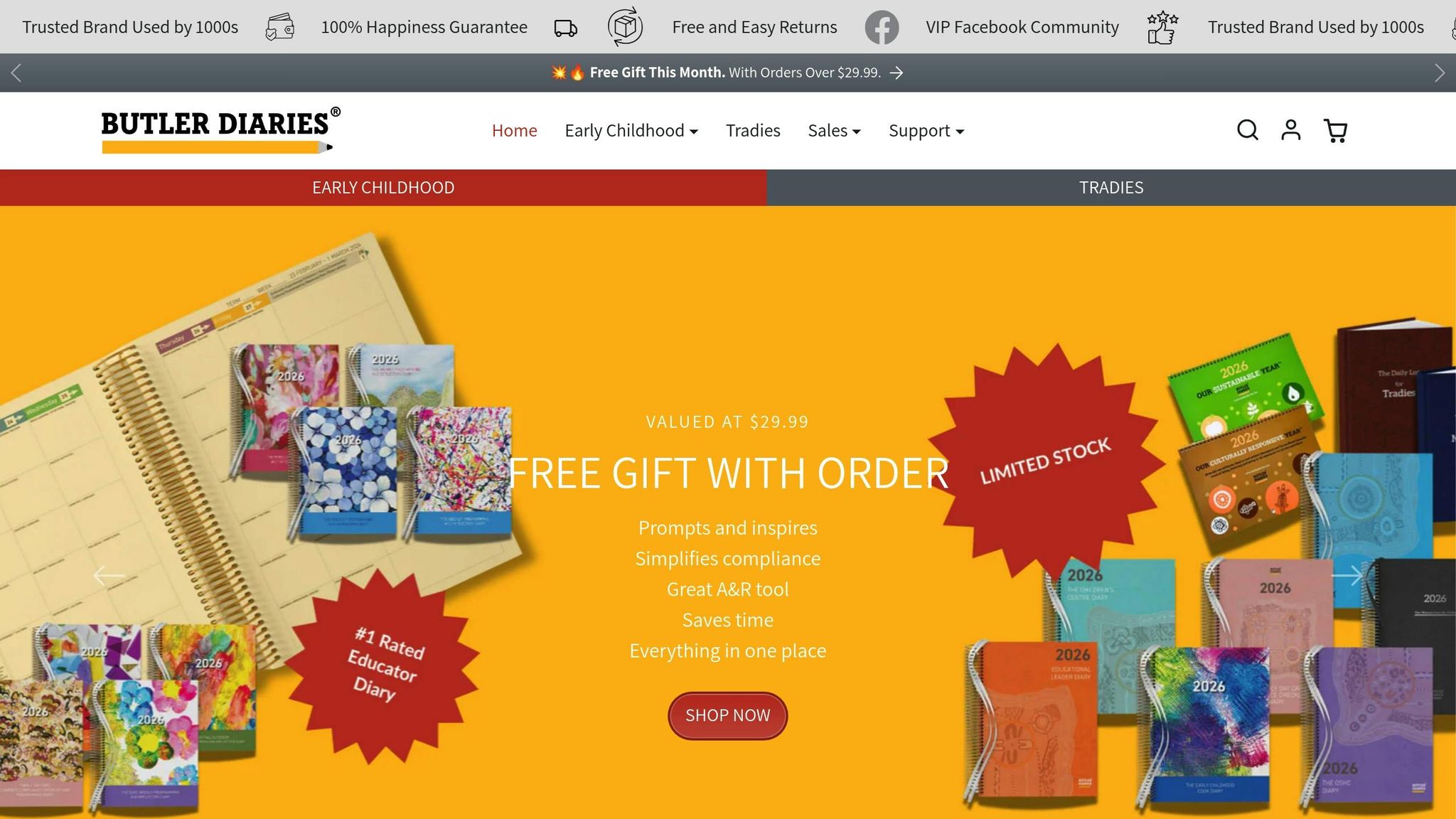
Butler Diaries offers tailored resources designed for early childhood educators who want to incorporate cultural awareness into their daily routines. One standout product is their 2026 Our Culturally Responsive Year Wall Calendar, which captures the key dates you celebrate and acts as a monthly prompt to remind you to embed culturally responsive practice outside of events.
Educator Alisha shared her experience with the calendar in February 2025, noting it made her life "so much easier". The calendar not only reduces stress but also aligns with Quality Area 6 of the National Quality Standard, which focuses on building partnerships with families and communities. Its sustainable and culturally inclusive design further enhances its value.
For those looking to dive deeper, the Our Culturally Responsive Year Calendar Guide – Digital Course is an excellent companion to the physical calendar. Available for $9.99 (discounted from $19.99), this course offers step-by-step guidance, compliance tips, and reflective prompts to help educators maximise their planning efforts. It encourages thoughtful approaches to teaching about diverse communities.
Butler Diaries also provides programming and reflection diaries, which include sections specifically for documenting cultural activities and linking them to EYLF learning outcomes. These diaries are designed to simplify compliance and record-keeping, offering role-specific sections for added convenience.
"We make your job easier by giving you designs that suit your specific every day requirements. Making compliance and record keeping a breeze. Stay organised and focus on exceeding." - Butler Diaries
Additional Digital Resources
In addition to Butler Diaries, other tools can enhance your diversity planning. The Australian Human Rights Commission's "Building Belonging" toolkit is a comprehensive resource that includes an eBook, educator guides, posters, and lesson plans. These materials are designed to promote respect for cultural diversity in early childhood settings. For example, the "All My Friends and Me" eBook and the "Colours of Australia" song provide engaging ways to address racial prejudice and foster positive attitudes about diversity.
Emerging AI-powered tools are also helping educators manage documentation and reporting tasks, freeing up more time for meaningful interactions with children. While these tools streamline administrative work, they complement rather than replace the personal engagement required for cultural programming.
Digital courses and online resources offer additional flexibility for professional development. These platforms allow educators to explore various traditions and find appropriate ways to celebrate them in their settings. Many include downloadable templates and planning sheets that can be customised to suit the needs of specific groups of children and families, ensuring comprehensive year-round coverage.
Building a Diversity Planning Table
A diversity planning table can serve as a practical roadmap for the year, helping you organise key dates, activities, and curriculum links efficiently. Start by listing the major dates and events you’ll explore, then incorporate specific celebrations that reflect the cultural backgrounds of the families in your care.
Your table might include columns for:
- Dates and events
- Planned activities
- EYLF outcomes
- Family involvement
- Planning and documentation tools
- Required resources
For example, you could plan sensory activities for toddlers, craft projects for preschoolers, and interactive discussions for older children. Sharing this table with families at the start of the year can strengthen transparency and encourage parents to contribute their cultural knowledge and traditions. As you learn more about the unique backgrounds of the families in your care, you can update the table to include new celebrations and adapt plans to better reflect your community’s diversity. This tool also integrates seamlessly with EYLF-aligned strategies, reinforcing a commitment to inclusivity every day.
"Early childhood is the time when children first become aware of differences among people and start to form opinions and attitudes about these differences." - Be You
Building Respect for Different Backgrounds in Early Childhood Education
By incorporating diverse experiences into planning, educators can create environments where every child feels valued. This approach not only highlights various cultural, religious, and social identities but also helps nurture empathy and understanding in young learners - a vital aspect of early childhood education. It lays the groundwork for teaching practices that go beyond occasional celebrations.
Acknowledging significant dates throughout the year fosters lifelong empathy and a deeper understanding of cultural diversity. These observances offer opportunities for meaningful discussions and learning experiences that strengthen connections between children, their families, and the broader community. Incorporating these celebrations into daily activities - such as storytelling, workshops, or events - ensures that inclusivity becomes a seamless part of the curriculum.
Educators looking for practical resources to support these efforts can explore tools like those offered by Butler Diaries. For instance, the 2026 Our Culturally Responsive Year Wall Calendar and its accompanying digital course are specifically designed to align with Quality Area 6 of the National Quality Standard. These resources provide a clear framework and practical guidance for embedding culturally responsive practices into everyday teaching.
The ultimate aim is not just to raise awareness but to celebrate and embrace all aspects of identity. By creating inclusive learning environments from the start, children develop the building blocks for lifelong respect, empathy, and an appreciation of diversity.
FAQs
How can educators use Diversity Events to foster inclusivity?
Educators can tap into diverse events to craft plans that celebrate and embrace cultural diversity. By weaving in stories, music, and art from various cultures, children can discover a broad spectrum of traditions and viewpoints in a fun and interactive way.
Highlighting important dates, such as Harmony Week or NAIDOC Week, through themed activities encourages children to build respect and understanding for different communities. Similarly, organising celebrations around major cultural events like Lunar New Year or Diwali gives children the chance to immerse themselves in and appreciate unique customs directly.
Incorporating these activities into daily learning routines not only aligns with educational goals but also nurtures a sense of inclusion and respect for all cultures within early childhood environments.
How can educators involve families in celebrating cultural diversity in the classroom?
Engaging families in celebrating cultural diversity is a fantastic way to build a more inclusive and enriching environment for children. Here are some ideas to bring this to life:
- Invite families to contribute by sharing items like cultural artefacts, traditional recipes, or meaningful stories from their heritage. These personal touches can spark curiosity and connection among children and adults alike.
- Organise cultural events, such as a multicultural night or a morning tea, where families can proudly showcase their traditions through food, music, or performances. These gatherings create opportunities for everyone to learn and appreciate different customs.
- Incorporate family input into activities. For example, families could lead a cooking session featuring traditional dishes, share folktales from their background, or guide children in creating art inspired by their culture.
These efforts not only help children feel a stronger sense of belonging but also encourage understanding and celebrate the vibrant diversity that exists within your community.
Why is it important for early childhood educators to celebrate cultural diversity, and how does it benefit children?
Celebrating cultural diversity in early childhood education plays a crucial role in shaping young minds. It helps children develop empathy, respect, and a sense of belonging. By exploring various cultures, traditions, and viewpoints, children gain a broader understanding of the world, preparing them to thrive in a multicultural society.
Introducing children to diverse celebrations not only sparks their imagination but also enhances their problem-solving abilities and strengthens social bonds. These experiences can help break down biases and encourage acceptance, creating a welcoming and inclusive learning environment. Such early exposure helps set the stage for children to grow into thoughtful, compassionate, and open-minded individuals.
